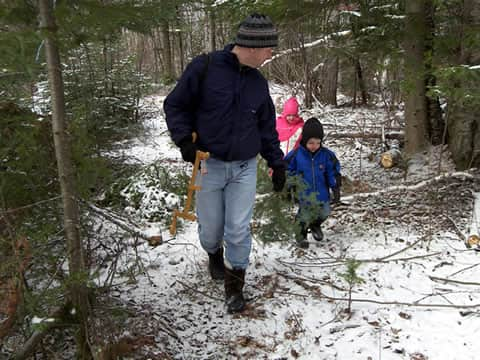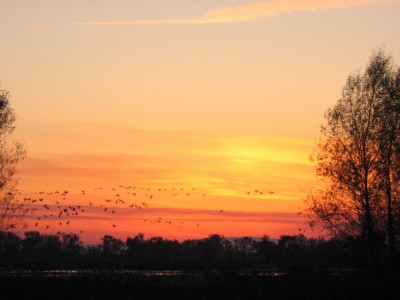Getting the Whole Family Outdoors During the Holiday Season
James Swan 12.11.13

The holiday season is family time.
Getting outside anytime of the year is good for your health. In your family, maybe not everyone hunts or fishes—so they need other reasons to spend time outside. Here’s three suggestions about ways to get whole family outside in the spirit of Christmas.
Cut your own firewood
Stands of timber need thinning for trees to grow with optimum health.
There are 155 National Forests in 41 states and many other state forests. If you have a wood stove or fireplace, you need wood to burn. You can certainly buy it, but many state and national forests across the United States have piles of slash timber just waiting for you to cut it up for firewood. Prices average $20 for four cords (a cord of wood is eight feet long, four feet high, and four feet wide).
You pick up a permit from your local district office and head out to designated areas. These are usually piles slash and branches that have been cut from logging, or removed because they’re species that are crowding out native species or a stand of timber is just too dense and needs to be thinned.
You can rent a chainsaw or bring our own—or if you want some cardio exercise, a crosscut saw and axe. The best firewood is “seasoned,” that which has been down on the ground for at least six months. Make sure to bring tire chains if there is snow on the roads.
In some urban areas, if you check craigslist and local newspapers—there are people who have wood in their yards left over from yard work, and from local tree-cutting services. Often, this is free and people want it moved. One thing to consider here is to check to see if there are any local restrictions about moving wood because of insects and diseases. If wood you’ve harvested is indeed diseased, you can help with pest control by burning it.

Cut down your own Christmas tree
Christmas time is also time for Christmas trees. Yes, some folks opt for metal or plastic trees, but others want the real thing. State and national forests across the United States sell permits (which usually run around $10) to cut your own Christmas tree. Check with the nearest national forest for details. A normal pruning saw will certainly work just fine. These are often species that need thinning out.
One thing to remember about cutting your tree is that if you cut it and leave some lower branches on the trunk, the tree may simply sprout new branches and form a new trunk. Pine trees will grow anywhere from a few inches to over a foot a year.
Take part in Christmas Bird Counts
This year marks the 114th year that the National Audubon Society has held its annual Christmas Bird Count. The counts take place between December 14 and January 5 all across the United States. Check with local Audubon Centers or chapters for details of what’s happening in your area. The count is not just fun, but its very important in gathering valuable data for determining the health and population dynamics of various species, migrations, and so on. For example, a few years back the Christmas Bird Counts helped determine that certain species of birds were in decline. This helped scientists discover how some pesticides were affecting bird populations, resulting in restrictions and bans on some of those chemicals.
If you happen to be a hunter, this is an opportunity to show off some of your prowess in locating and identifying various species of birds. It also could be a way to cultivate some diplomacy.
Hunters are a minority group, not well understood by many people. That they are some of the most ardent conservationists is something that you can’t just easily tell people because it sounds defensive. You have to show them. If it feels right you might even offer to organize a wildlife watching trip to a conservation area that hunting groups have helped preserve as cooperative projects with environmental groups.

